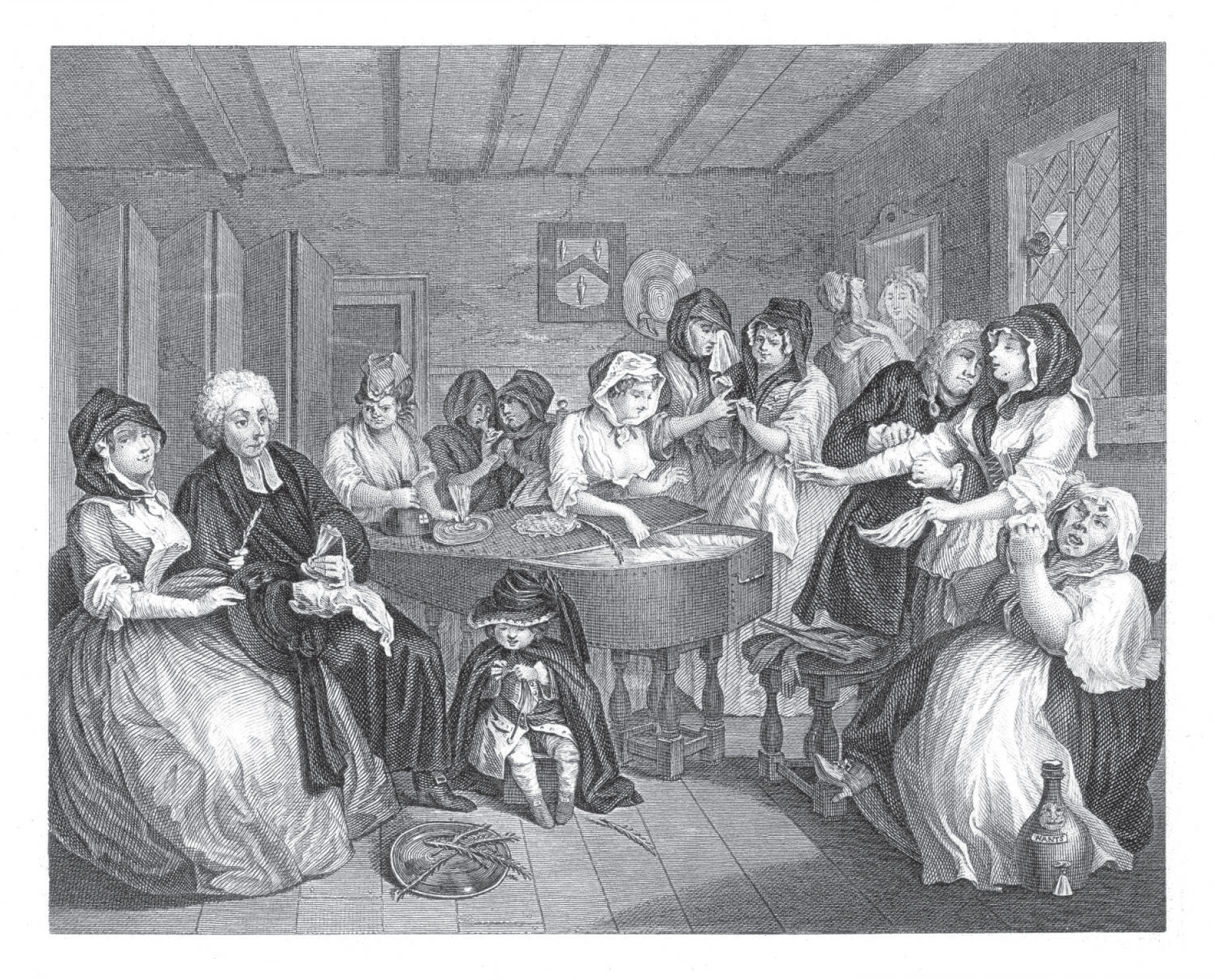
HARLOTS PROGRESS SERIES
Both series sold out and proved extremely successful with people from all walks of life. A Rake’s Progress in eight scenes followed the paintings were completed by mid-1734 and the engravings published in June 1735. The first of his ’modern moral subjects‘ was A Harlot’s Progress, in six scenes completed in 1731 and engraved by Hogarth himself as a set of six prints published in 1732. His new focus on morality was characteristic of his own approach to life, satirising vice and folly. He decided to try the new approach of painting and engraving ‘modern moral subjects’ which he described as so novel as to be a ’Field unbroke up in any Country or any age‘. In his ‘Autobiographical Notes’ compiled in 1763, Hogarth recalls that after ‘a few years’ of painting portraits and conversation pieces, he realised that this ‘manner of painting was not sufficiently paid to do everything my family required‘. The pictures were painted to be engraved and then offered for sale ‘to the Highest Bidder’ after the engravings were finished. But for this series he invented the characters, plot and the title of each scene. Hogarth was a devoted play-goer and made his name as a painter with a scene from John Gay’s The Beggar’s Opera. The title, though little else, is taken from John Dryden’s play Marriage A-la-Mode first performed in 1672. The basic story is of a marriage arranged by two self-seeking fathers – a spendthrift nobleman who needs cash and a wealthy City of London merchant who wants to buy into the aristocracy. It may also refer to the anatomical model’s own origin – the only corpses which anatomists could lawfully obtain were those of executed criminals.įor centuries, the English have been fascinated by the sexual exploits and squalid greed of the aristocracy, and these are the subjects of one of the supreme achievements of British painting – Hogarth’s six-part series Marriage A-la-Mode, which illustrates the disastrous consequences of marrying for money rather than love. The tripod on the top of the cupboard above the anatomical model’s head is a presage of the three-sided gallows tree which will feature in the final scene of this series of paintings. The skeleton in the cupboard seems to be propositioning the anatomical model, associating illicit sex with death – and suggesting that something is going on behind the Viscount’s back. The cabinet behind the Viscount displays a narwhal horn, a pile of bricks, a barber’s shaving bowl, a large urine flask, a head that might act as an apothecary’s shop sign, a giant’s femur, a stuffed crocodile and an ostrich egg, among other curiosities. The alarming metal machines on the right are described in the open book as used for setting shoulders and drawing corks.
HARLOTS PROGRESS FULL
His consulting room is full of extraordinary objects which suggest that he practises as a physician, surgeon, barber-surgeon, apothecary and chemist. It seems unlikely that the doctor’s pills will work if he cannot cure himself. The skull on the table is pocked with small black holes which indicate erosions caused by the disease. The doctor himself is riddled with the disease – the sunken bridge of his nose, his bulging forehead, thick lips, probable toothlessness and deformed legs are all consistent with an advanced degree of congenital syphilis. Veneral disease was rife during this period and easily caught, but not so easily cured. The main treatment for venereal disease at this time was pills made from mercury. The pills are quite clearly black, matching the black mark on the Viscount’s neck that Hogarth uses to denote syphilis.

Brandishing his cane, the Viscount seems to be protesting that the doctor’s pills don't work. The little girl stands between the Viscount’s open legs, while he sits with a pill box beside his groin, suggesting that she is ‘his’ girl and that they are both there to be treated for a sexually transmitted disease.


Whether it was he who infected the child is far from certain but it seems likely he will have to pay handsome damages. She appears furious that the Viscount has infected her daughter. Her dress is too gaudy to be ladylike and she has black spots on her face to indicate that she, like the Viscount and the doctor himself, is infected with venereal disease. The tattoo ‘FC’ above the woman’s left breast was inflicted on convicted prostitutes, and it seems she has consigned her daughter to the same profession. The woman’s sleeves are cut from the same gold brocade as the little girl’s skirt which, as well as the apron, is far too long, suggesting she may be wearing her mother’s clothes. Viscount Squanderfield is accompanied by a sickly looking little girl and a woman with a folding pocket-knife who is probably the girl’s mother and madam. The third scene in the series of six paintings by Hogarth titled Marriage A-la Mode is set in the consulting room of the French doctor M.


 0 kommentar(er)
0 kommentar(er)
